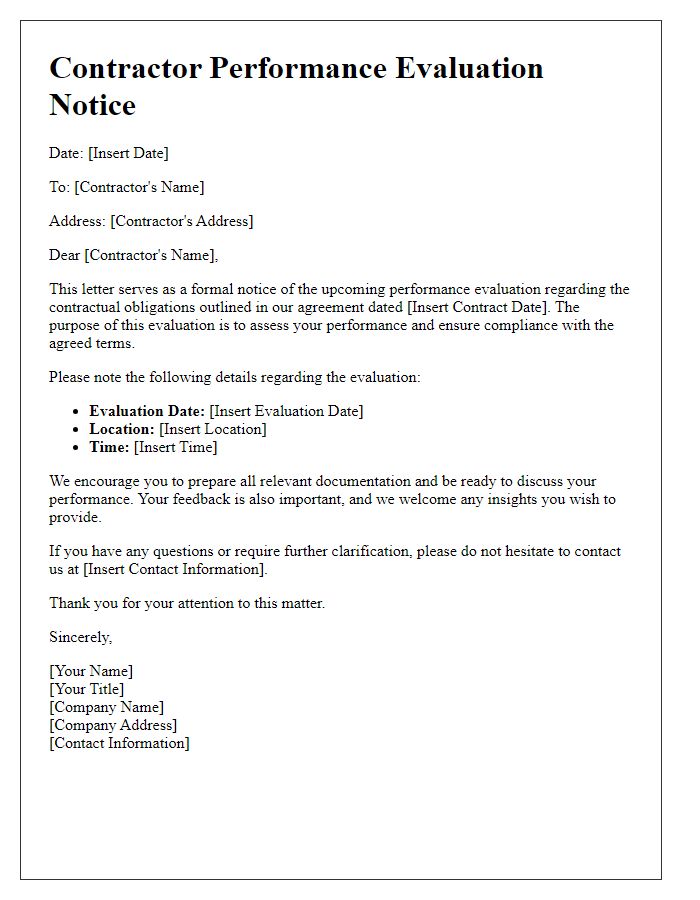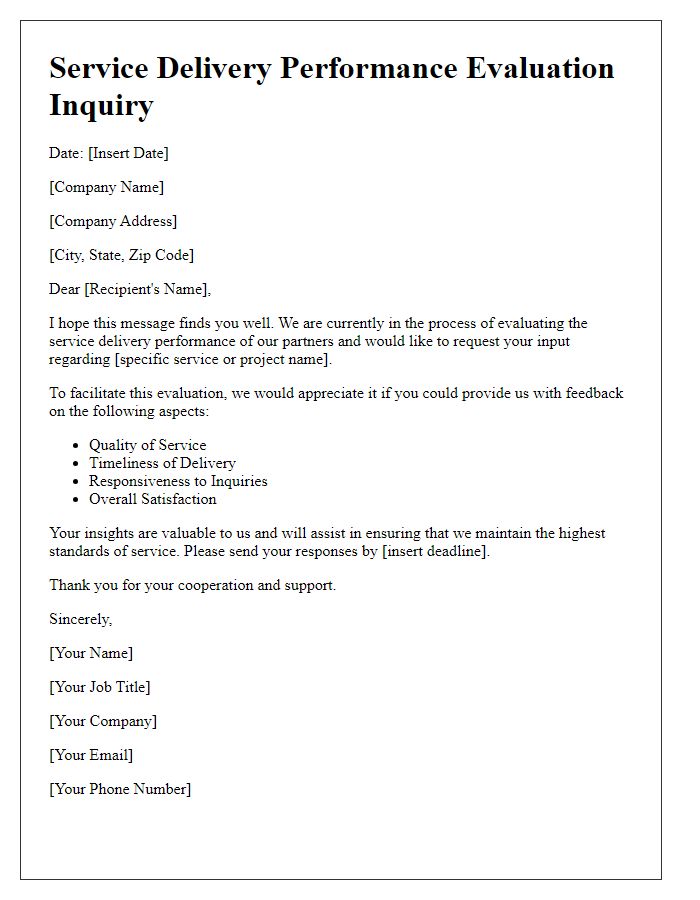Are you looking to enhance your vendor relationships and ensure peak performance? A well-crafted letter requesting a vendor performance evaluation can help you gather valuable insights and foster collaboration. By communicating your expectations clearly, you set the stage for improvement and satisfaction on both ends. Dive into our article to discover a handy template and tips for creating your own effective evaluation request!

Introduction and Purpose
Vendor performance evaluation is crucial for maintaining high standards in supply chain management. This process allows organizations to assess the efficiency, reliability, and overall quality of services provided by vendors, such as manufacturers and service providers. Thorough evaluations contribute to informed decision-making, fostering long-term partnerships and enhancing procurement strategies. Evaluation criteria may include delivery timelines, product quality, compliance with contractual obligations, customer service responsiveness, and adherence to safety regulations. Regular assessments help identify areas for improvement, ensuring alignment with organizational goals and objectives, while also building a strong foundation for future collaborations.
Evaluation Criteria and Metrics
The vendor performance evaluation request typically outlines various evaluation criteria and metrics essential for assessing vendor effectiveness. Key criteria may include cost efficiency, quality of products or services, delivery timelines, and customer service responsiveness. Cost efficiency focuses on comparing vendor pricing against industry standards and budgets (typically analyzed quarterly). Quality assessment revolves around defect rates, specifically targeting acceptable thresholds (often below 2% for manufacturing). Delivery timelines are evaluated against agreed-upon schedules, with metrics tracking late deliveries (aiming for less than 5% deviation from the timeline). Customer service responsiveness is measured through response time to inquiries and resolution rates, ideally achieving a response within 24 hours and resolving issues on the first contact at least 80% of the time. This comprehensive evaluation ensures alignment with business objectives and fosters continuous improvement.
Feedback and Response Deadline
Vendor performance evaluations are crucial for assessing service quality and relationship management within supply chain operations. An effective evaluation process includes gathering feedback on compliance with service-level agreements (SLAs) and identifying areas for improvement. Key performance indicators (KPIs) such as delivery timeliness, product quality (with specific metrics like defect rates below 1%), and customer service responsiveness (average response time under 24 hours) will be reviewed. This evaluation will take place within specific timeframes, with feedback due by April 15, 2024, allowing sufficient time for comprehensive analysis. The evaluation process not only informs future procurement decisions but also fosters continuous improvement amongst partners, ensuring mutual growth in a competitive marketplace.
Confidentiality and Data Protection
Vendor performance evaluation involves assessing the effectiveness and reliability of suppliers who provide goods or services. Key metrics include delivery timelines, product quality, customer service responsiveness, and compliance with contract terms. In the context of confidentiality and data protection, adherence to regulations such as GDPR (General Data Protection Regulation) is crucial. Businesses must evaluate how vendors manage sensitive data, including personal information, ensuring encryption practices and secure data storage methods are implemented. Regular audits (annual or biannual) of vendor data handling processes help identify potential risks and improve data security measures. Additionally, establishing clear communication channels for reporting data breaches strengthens overall accountability.
Contact Information for Queries
Contacting vendors for performance evaluations requires clear and concise communication. Always include your name, title, organization, and contact information in the initial correspondence for efficient coordination. Telephone numbers must be direct, ideally a desk line or cell phone, ensuring accessibility. Email addresses should be professional, associated with the organization's domain for credibility. Specify the preferred method of communication to facilitate timely responses, whether phone calls, video conferences, or emails. Include any deadlines for the evaluation process to underscore the urgency and importance of the task.













Comments